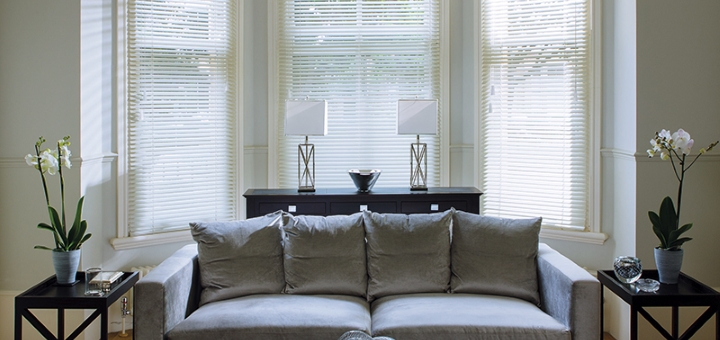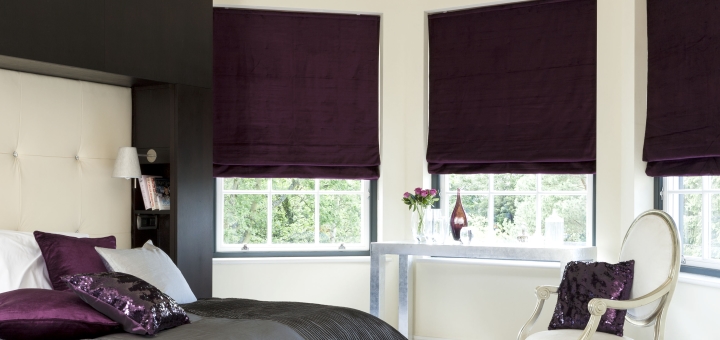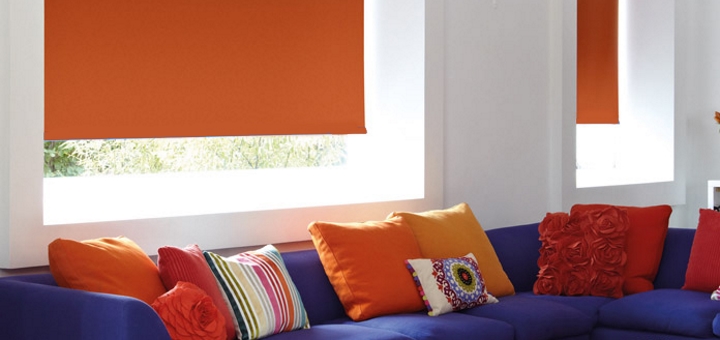In a blind panic? Tell your Romans from your Venetians with our handy blinds guide
The traditional net curtain may epitomise the image of the British nosey neighbour, but in twenty-first century homes we’re just as likely to be keeping an eye on things through the slats of our blinds.
Though curtains continue to account for about 45% of the window coverings market, the growing popularity of blinds has been eating away at that market share for years. Arguably, what’s been driving this growth is the increasing range and quality of blinds available for domestic use.
So, forget about having to live with workplace chic, where you have a dull functional blind coexisting with glaring fluorescents – the many high street and online blind specialists, such as Cheapest Blinds UK (who are listed in our Directory), offer elegant, attractive and made-to-measure solutions to suit every window and room.
The flip side of there being so many options these days is that blind terminology – roller, Venetian, Roman, pleated, vertical, roof, and more – can be somewhat baffling. So, if you struggle to tell one type of blind from another – never mind work out which kind is the right option for you – avoid getting into a blind panic by using our handy guide below.
Roller blinds
Always popular, roller blinds are – as the name suggests – corded fabric blinds that roll up when not in use.
Part of the appeal of roller blinds is that they are affordable, practical, and available in many different colours, patterns and sizes. Bold colour options and wipe-clean variants make a roller blind a great choice for bathrooms and kitchens, but they’re less suitable for spaces where you need a middle-ground between complete privacy and full-on goldfish bowl.
Blackout blinds
Of course, there are occasions when you want to block out everything outside – and that’s where a blackout blind, a type of roller blind made from particularly thick fabric, comes into its own.
If you’re someone who finds it hard to sleep in a bedroom that isn’t completely dark, a blackout blind is what you need to stop light from outside entering the room. Typically designed for function rather than beauty, blackout blinds can easily be fitted behind a Venetian blind or curtains in order to give you the best of both worlds.
That said, blackout blinds don’t have to be something you hide away, as this fabulously vibrant bright orange blackout blind proves.
Venetian blinds
Venetian blinds are the familiar type that feature horizontal slats. Though usually made from real wood or aluminium, faux wood is also becoming increasingly popular as a cheaper (and moisture-resistant) alternative that is suitable for every room in the home.
A big advantage of Venetian blinds over roller ones is their flexibility. Where a roller blind really has only two positions – up or down – you can modify a Venetian blind without having to fully raise it, instead tilting the slats (using a built-in stick) to let in more or less light as desired.
Be prepared to have to dust and clean your Venetian blind, though – especially in areas with splashes and grime, like bathrooms and kitchens.
Vertical blinds
A vertical blind works in a similar way to a Venetian blind in that it’s made up of slats that you tilt to let more or less light enter the room.
The big difference is that vertical blinds are made of fabric, and the slats (or vanes) are vertical rather than horizontal, suspended from a rail above the door or window.
Their design and functionality makes vertical blinds a popular option for French doors, conservatories and other large windows, as they hang neatly to either side when not drawn.
To be honest, we’re not great fans of the traditional white or grey vertical blinds – they’re a bit officey for our taste – but the wide range of brightly coloured vertical blinds available these days means that you can make a brilliantly bold statement while still achieving the control over light and privacy that you desire.
Roman blinds
Made from quality fabric (or sometimes bamboo), and typically available in a wide choice of rich colours, Roman blinds are a luxurious alternative to curtains – making them perfect for bedrooms – but with the convenience that only a blind can offer.
Roman blinds use a cord-lock mechanism, with an attractive pleated look when raised. In the lowered position, a Roman blind hangs straight to give a similar appearance to a roller blind.
The combination of fabric and pleats makes a Roman blind a less appropriate option for damp bathrooms, though.
Conclusion
In short, there are pros and cons to all the different options, and there’s no one blind type – except perhaps a faux-wood Venetian – that is likely to work in every room of the home.
So, the main thing when choosing a blind is to understand all the choices that are out there and to consider what you most want your new blind to achieve – whether that’s blocking out light at night, affording privacy, making a bold design statement, or a combination of all those things and more.
What types of blind do you have in your home, and what do you like or dislike about them? Do share your thoughts, tips and recommendations in the comments section below.









